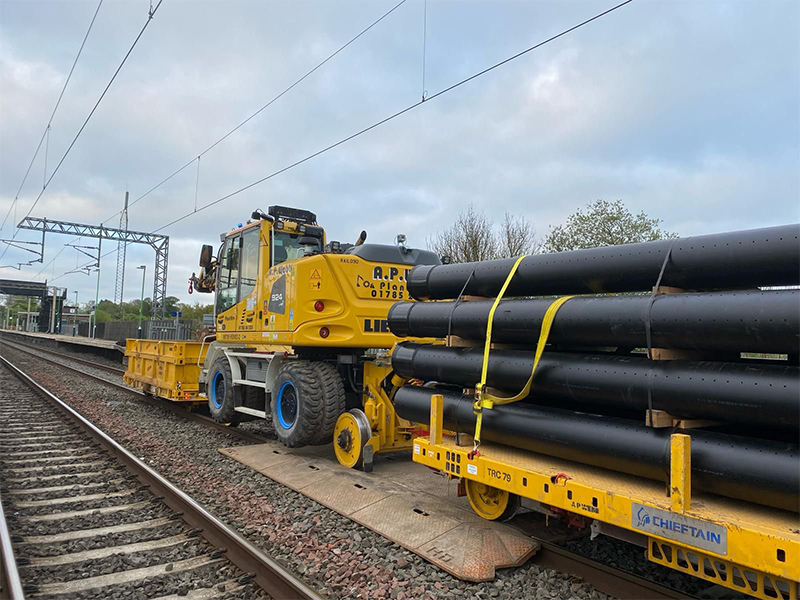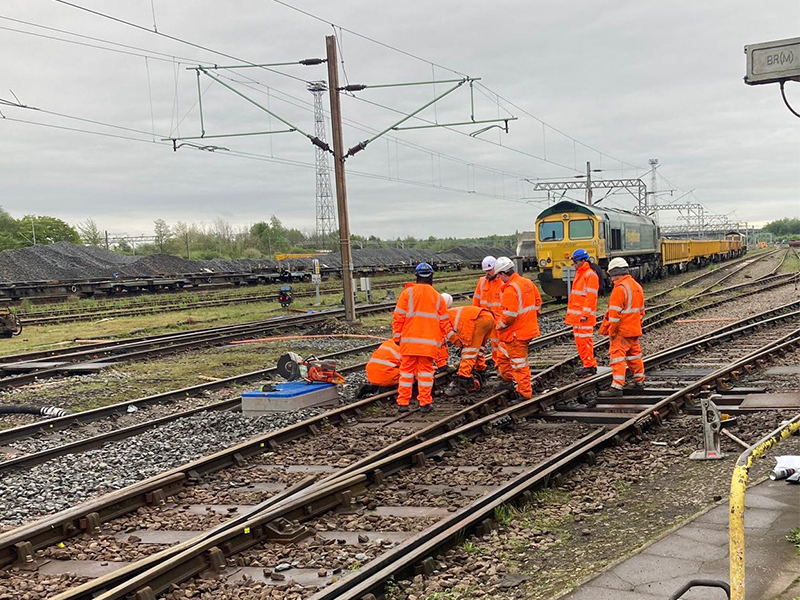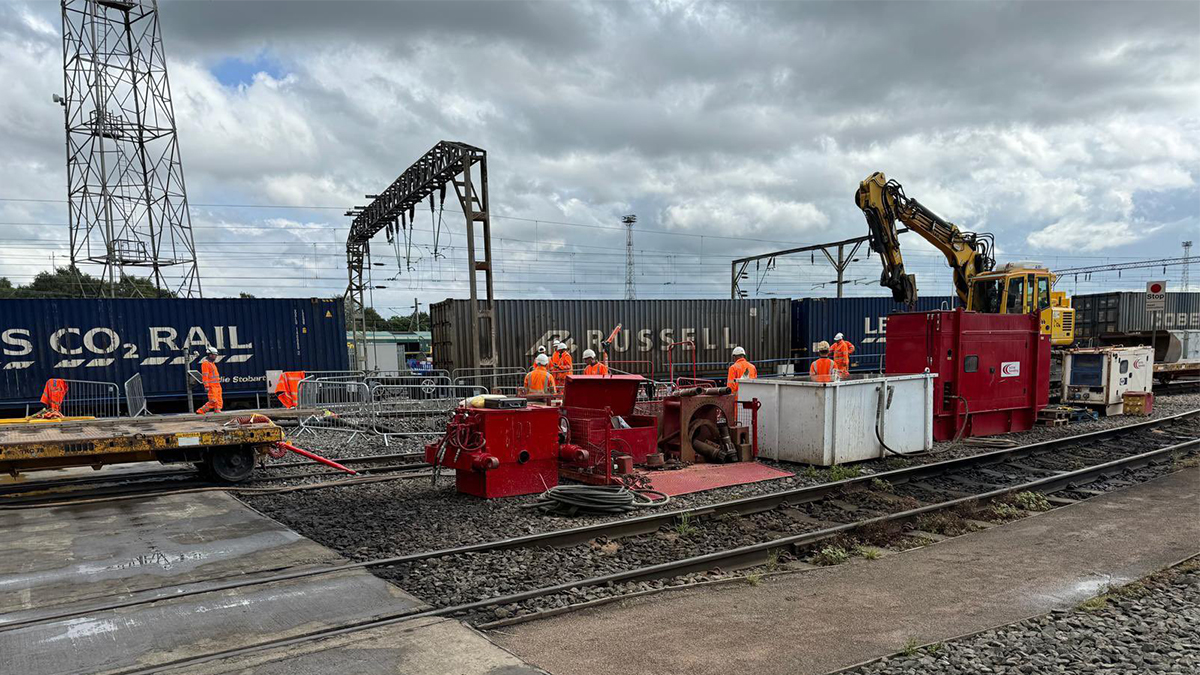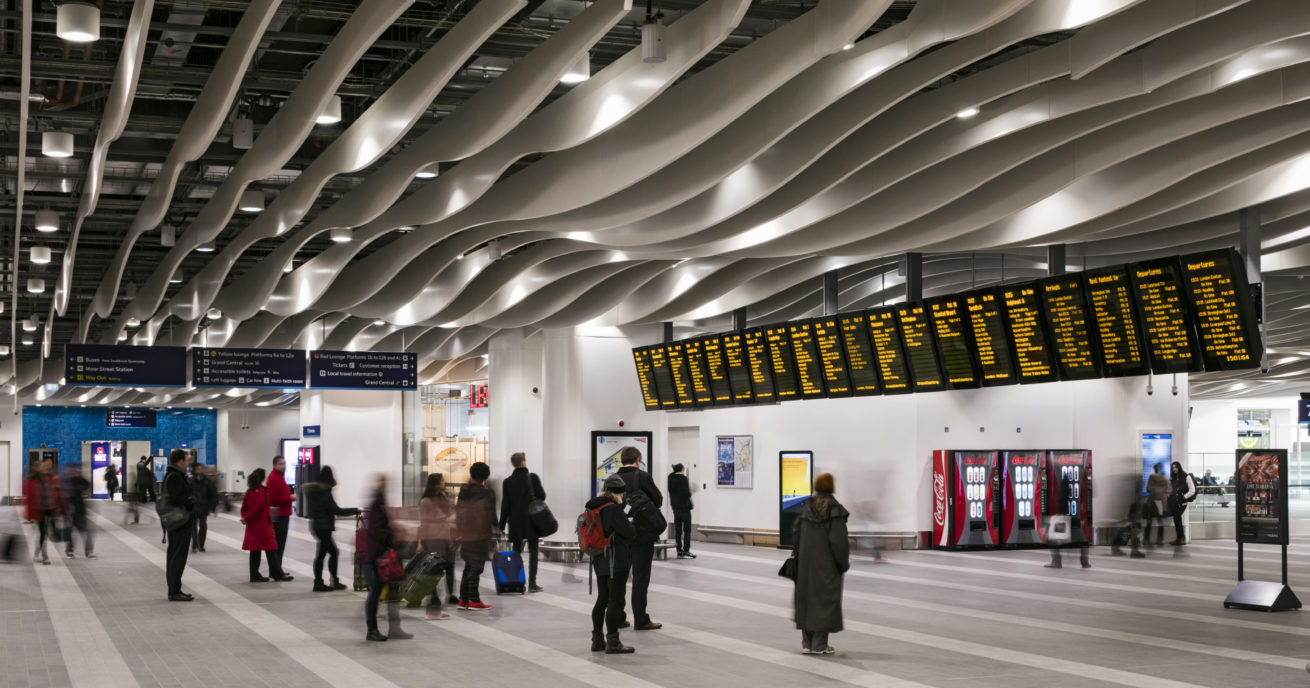You may be familiar with engineering works like track renewals, signalling upgrades and electrification. But less visible work – like drainage – also plays a vital part in keeping the railway running smoothly.
For example, in Pitstone, north of Tring in Hertfordshire, we spent the Easter bank holiday and the early May bank holiday renewing the drainage. This project may seem small, but it plays a vital role in protecting one of the country’s busiest routes: the West Coast Main Line.
The work
Between Friday 18 April and Monday 21 April, engineers spent nearly 30 hours installing 182 metres of new drainage pipes and five concrete catchpits between the fast lines at Pitstone. Catchpits are empty chambers that catch silt and debris, preventing it from building up in a drainage system and causing blockages.
We then used a special tamping machine to pack the ballast – the stones that support the track – under the rails before trains could run again.
We followed this up during the early May bank holiday by installing a further 34 drainage pipes and six more concrete catchpits on the slow lines.
The new pipes and catchpits will help keep drainage working well for several years, enhancing its ability to cope with even larger amounts of water.

The importance of drainage
Drainage is essential to a reliable and safe railway for you and freight.
Poor drainage can lead to waterlogged track beds, which can cause the track to move. This can in turn mean we need to slow down trains with speed restrictions – or even close a line while we repair the damage.
Renewing the drainage systems brings many benefits, including:
- extending the life of the track
- smoother and less bumpy train rides
- less need for maintenance in the future.

A quiet success with big impact
The West Coast Main Line is one of Europe’s busiest mixed-use railway lines, meaning it’s used for freight and passengers. Hundreds of freight trains and thousands of passengers travelling between Scotland and London depend on this vital route.
So, we needed to upgrade its drainage to protect it from flooding and prevent delays to journeys. Flooding is a growing risk because Britain’s facing more extreme weather like very heavy rain.
And the Pitstone drainage renewal is an example of the work we’re doing to ensure your journeys continue running smoothly in the long term, whatever the weather.
It also serves as a reminder that some of the most important work on the railway happens below the surface. We work tirelessly to keep Britain moving and behind-the-scenes engineering like this is a vital part of that.




